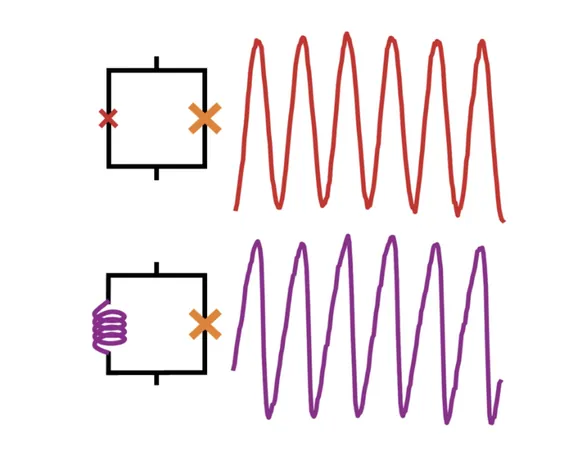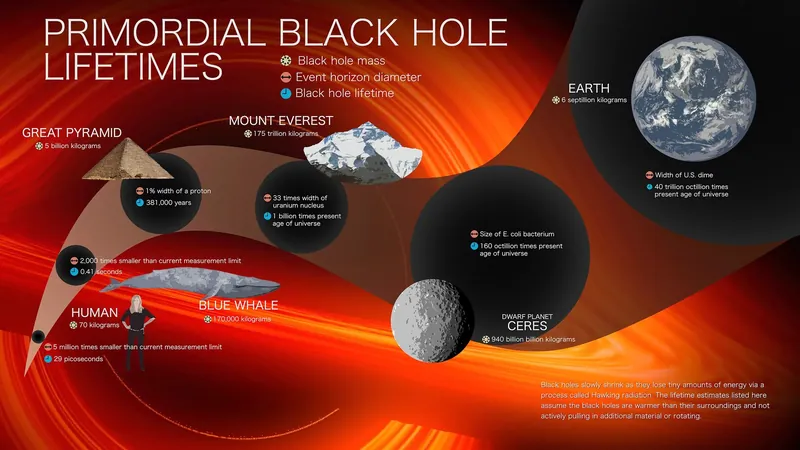
Revolutionary Twisted Trilayer Graphene: A Leap into the Quantum Realm!
2025-06-27
Author: Siti
Unlocking the Mysteries of Superconductivity
Superconductivity is a captivating phenomenon where certain materials exhibit zero electrical resistance at low temperatures, thanks to the formation of Cooper pairs—where electrons pair up in a unique way. But did you know there are two types of superconductivity? Conventional superconductors rely on electron-phonon interactions, while unconventional ones defy those traditional mechanisms and remain a puzzle for scientists.
A Groundbreaking Discovery in Twisted Graphene
Collaborative efforts from researchers at the Massachusetts Institute of Technology (MIT), Harvard University, and the National Institute for Materials Science in Japan have unveiled potential secrets of unconventional superconductivity in twisted graphene moiré heterostructures. These materials, crafted by stacking graphene sheets at a precise angle of around 1.1°, may hold the key to a new era in quantum technology.
The Game-Changing Kinetic Inductance
Published in the prestigious Physical Review Letters, the research highlights an impressive and tunable kinetic inductance in twisted trilayer graphene. This feature could open new doors for quantum technologies, including cutting-edge single photon detectors and superconducting quantum bits. Co-senior author Paritosh Karnatak recalls the excitement sparked by earlier discoveries in twisted graphene, which suggested this material could host remarkable superconducting properties.
Exploring Superconducting Junctions
The team meticulously established superconducting junctions in this unique graphene stack. Using superconducting leads, they connected two superconducting materials across a nanoscale barrier. By tuning the doping state via gate voltages, they could effectively manipulate the superconducting characteristics of the material—a feat not possible with conventional high-temperature superconductors.
Indispensable Insights into Quantum Behavior
Not only did the researchers confirm low resistance indicative of superconductivity, but they also demonstrated that their material pushed away magnetic fields—another hallmark of superconductors. The magic angle twisted trilayer graphene displayed kinetic inductance values nearly 50 times larger than typical superconductors, suggesting it’s a formidable candidate for quantum applications.
Charting New Territories in Superconductivity
Despite the promise of these materials, questions remain about the underlying mechanisms binding electrons in unconventional superconductors. This research could illuminate those mysteries and potentially guide future explorations into superconductivity, especially in materials that are easier to synthesize.
Future Prospects and Challenges
While the breakthrough is revolutionary, the specialized material currently cannot be found in nature, raising challenges for scalability within quantum technologies. Researchers now aim to develop superconducting circuits capable of operating at high microwave frequencies.
A New Frontier in Quantum Research
This study doesn’t just stop at twisted trilayer graphene. It inspires a new wave of interest in naturally occurring graphitic materials that could also unlock superconductivity, paving the way for practical applications. As Karnatak and his team continue their investigative journey, the scientific community eagerly anticipates further revelations from the world of twisted graphene.




 Brasil (PT)
Brasil (PT)
 Canada (EN)
Canada (EN)
 Chile (ES)
Chile (ES)
 Česko (CS)
Česko (CS)
 대한민국 (KO)
대한민국 (KO)
 España (ES)
España (ES)
 France (FR)
France (FR)
 Hong Kong (EN)
Hong Kong (EN)
 Italia (IT)
Italia (IT)
 日本 (JA)
日本 (JA)
 Magyarország (HU)
Magyarország (HU)
 Norge (NO)
Norge (NO)
 Polska (PL)
Polska (PL)
 Schweiz (DE)
Schweiz (DE)
 Singapore (EN)
Singapore (EN)
 Sverige (SV)
Sverige (SV)
 Suomi (FI)
Suomi (FI)
 Türkiye (TR)
Türkiye (TR)
 الإمارات العربية المتحدة (AR)
الإمارات العربية المتحدة (AR)